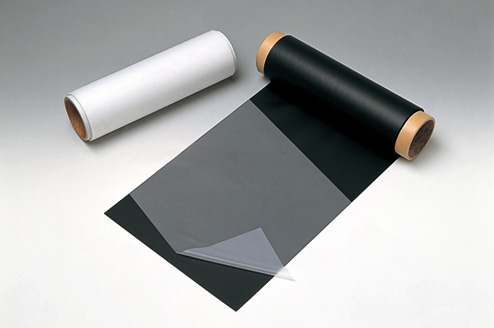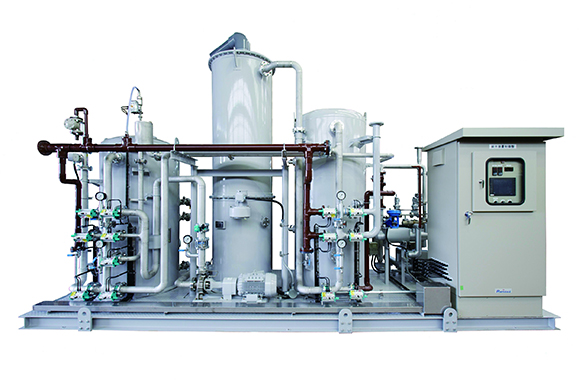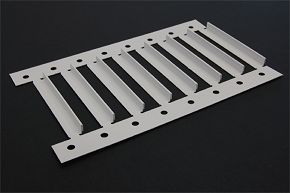Machinery & Equipment
324 products.
Filter by business area
[Close]
134 products.
[Close all]

BioPTMG is a polyether polyol manufactured from plant-derived raw materials.
BioPTMG has the same performance as petroleum-derived PTMG as a raw material for polyurethane and polyester resins and has excellent impact, wear and hydrolysis resistance, flexibility at low temperatures, etc. Taking advantage of these characteristics, it can be used in a wide range of fields, from interior and fashion to industrial materials.
- Grades:
- BioPTMG650、BioPTMG1000、BioPTMG2000、BioPTMG3000
- Japan, Chemical Substances Control Law:
- (7)-129
- Japan, Poisonous and Deleterious Substances Control Law:
- Not applicable.
- Japan, Fire Services Law:
- Hazardous Material Class 4 Petroleums No.4 Hazardous Rank III(BioPTMG650)
Combustible Materials, Flammable Solids(BioPTMG1000, 2000, 3000)

PTMG (Poly(tetramethylene ether)glycol / PTMG) is a linear polyether glycol with hydroxyl groups on both ends. As a polyol, it reacts readily with isocyanates (for example MDI, TDI), etc. to make resins with excellent properties.
- Grades:
- PTMG250、PTMG650、PTMG850、PTMG1000、PTMG1300、PTMG1500、PTMG1800、PTMG2000、PTMG3000、PTMG3200(developed grade in mass production)
- Japan, Chemical Substances Control Law:
- METI-No. 7-129
- Japan, Poisonous and Deleterious Substances Control Law:
- Not applicable.
- Japan, Fire Services Law:
- Hazardous Material Class 4 Petroleums No.3 Hazardous Rank III (PTMG250)
Hazardous Material Class 4 Petroleums No.4 Hazardous Rank III (PTMG650,850)
Combustible Materials, Flammable Solids (PTMG1000, 1300, 1500, 1800, 2000, 3000, 3200(developed grade in mass production))

Maleic anhydride is produced by oxidation of benzene or a C4 hydrocarbon such as butane in the presence of a vanadium oxide catalyst. Maleic anhydride can be converted to maleic acid by hydrolysis and to esters by alcoholysis.
- EINECS: No. 203-571-6
- Japan, Chemical Substances Control Law: METI-No. 2-1101
- Japan, Industrial Safety and Health Law: Dangerous Goods and Toxic Substances Whose Names Should be Labeled and be Notified Appended Table 2-1978
- Japan, Poisonous and Deleterious Substances Control Law: Not applicable.
- Japan, Fire Services Law: Not applicable.

THF (Tetrahydrofuran) is a stable compound with relatively low boiling point and excellent solvency. It is widely-used for dissolution and reaction of various substances. Also it is used as a starting material for the synthesis of poly(tetramethylene ether) glycol (PTMG), etc. Since 1982, Mitsubishi Chemical's Tokai plant has produced high-purity, high-quality THF from butadiene using our proprietary technology.
- EINECS: No. 203-726-8
- Japan, Chemical Substances Control Law: METI-No. 5-53
- Japan, Industrial Safety and Health Law: No. 5-53
- Japan, Industrial Safety and Health Law: Dangerous Goods and Toxic Substances Whose Names Should be Labeled and be Notified Appended Table 2-1278
- Japan, Poisonous and Deleterious Substances Control Law: Not applicable.
- Japan, Fire Services Law: Hazardous Material Class 4 Petroleums No.1 (water-soluble liquid). Hazardous Rank II
- U.N. Class: 3
- U.N. No.: UN2056

NMP (N-Methyl-2-Pyrrolidone) is a polar solvent with outstanding characteristics. It has a wide range of applications because it offers very high solvency, high boiling point, low freezing point, and ease of handling.
- EINECS: No. 212-828-1
- Japan Chemical Substances Control Law: METI-No. 5-113
- Japan, Industrial Safety and Health Law: No. 8-1-1014
- Japan, Industrial Safety and Health Law: Dangerous Goods and Toxic Substances Whose Names Should be Labeled and be Notified Appended Table 2-2108
- Japan, Poisonous and Deleterious Substances Control Law: Not applicable.
- Japan, Fire Services Law: Hazardous material Class 4 Petroleums No.3 (water-soluble liquid).

GBL has a wide range of practical applications because of its low freezing point, high boiling point, and a unique combination of solvent and electrical properties. It has applications as a solvent for special resins, in photography, in batteries, and as an electrolyte. Also a number of derivatives are synthesized from GBL.
- EINECS: No. 202-509-5
- Japan Chemical Substances Control Law: METI-No. 5-3337
- Japan, Industrial Safety and Health Law: No. 5-3337
- Japan, Industrial Safety and Health Law: Dangerous Goods and Toxic Substances Whose Names Should be Labeled and be Notified Appended Table 2-412
- Japan, Poisonous and Deleterious Substances Control Law: Not applicable.
- Japan, Fire Services Law: Hazardous material Class 4 Petroleums No.3 (water-soluble liquid).Aprotic, polar solvent.

12BG (1,2-butanediol) is a branched glycol that has a primary hydroxyl group and a secondary hydroxyl group on adjacent carbon atoms. Mitsubishi Chemical Corporation offers two grades of purity. Both can be reacted with a dicarboxylic acid (e.g., phthalic acid or adipic acid) for use as a polyester polyol or a plasticizer, or reacted with an unsaturated dicarboxylic acid (e.g., maleic anhydride) for use as a raw material for unsaturated polyester resin. The high-purity grade 12BG is suitable for use as a solvent for inks and as a raw material for surfactants.
- EINECS: No. 209-527-2
- Chemical Substance Control Law (CSCL): METI-No. 2-235
- Japan, Industrial Safety and Health Act (ISHA): No. 2-235
- Japan, Poisonous and Deleterious Substances Control Act: Not applicable.
- Japan, Fire Service Act:Hazardous Materials, Category IV—Class III petroleums (water soluble liquids)

14BG (1,4-Butanediol) is a straight chain glycol with hydroxyl groups on both ends. It is used as a raw material for high performance polyester and polyurethane resins as well as for industrial chemicals like tetrahydrofuran and gamma-butyrolactone. Since 1982, Mitsubishi Chemical's Tokai plant has produced high-purity, high-quality 14BG from butadiene using our proprietary technology.
- EINECS: No. 203-786-5
- Japan, Chemical Substances Control Law: METI-No. 2-235
- Japan, Industrial Safety and Health Law: No. 2-235
- Japan, Poisonous and Deleterious Substances Control Law: Not applicable.
- Japan, Fire Services Law: Hazardous material Class 4 Petroleums No.3 (water-soluble liquid).
Polycarbonatediol, BENEBiOL™
[Close]

Polycarbonatediol(PCD) is a linear polycarbonate with hydroxyl groups at both ends. It easily reacts with isocyanate compounds(e.g. MDI, TDI, IPDI, H12MDI), and generates polymers with characteristics such as durability and chemical/hydrolysis resistance. BENEBiOL™ is the biomass-based PCD developed by our proprietary manufacturing technology. Because of “key monomer“ of each grade, polyurethane resins based on BENEBiOL™ will show an outstanding property level with regard to flexibility and chemical/stain resistance for example, in addition to the characteristics of conventional PCD. Besides, your product will be equipped with unique touch and feeling.Biomass-based polycarbonatediol with superior characteristics
Characteristics of polyurethane resins based on BENEBiOL™
non-edible raw material is used for some grades
transparency, stain resistance, chemical resistance, durability, toughness, weather resistance
flexibility, soft feel and touch, high hardness, good fit
NOVADURAN™ PBT resin has excellent electrical insulation performance, good chemical resistance, moldability. Taking advantage of these characteristics, it has been widely used as a material for automotive ,E&E, and high-performance film applications.
XANTAR™ PC has excellent transparency, impact resistance, flame reistance, heat resistance, electrical properties.
Taking advantage of these characteristics, it has been widely used as a material for automotive ,E&E,
and high-performance extrusion applications.
Coke, Mitsubishi™ Coke
[Close]

Mitsubishi™ Coke is a raw material used in blast furnaces. The coke is manufactured by blending many types of coal and carbonized (coking) at a high temperature of about 1200 ℃ in a coke oven. Coke is one of the essential raw materials for iron-making in blast furnaces, and is supplied to major steel mills in Japan and other countries.
Needle Coke
[Close]

Needle cokes are used as a primary material for graphite electrodes in electric furnace. Coal-based needle coke is produced from coal tar that appears during coke production. Compared to petroleum-based needle coke, coal-based needle coke has excellent physical properties, such as low co-efficient of thermal expansion and low electric resistance, along with less spalling and less breakage.
DIAPOL™-WMB is a composite material (wet masterbatch) produced by acid coagulation of SBR latex, carbon black and water slurry in an ultradispersion process. It is widely applied as a raw material for industrial products; water seals and gaskets; and tires and belts.
Rubber Carbon Black, DIABLACK™
[Close]
Acrylic Sheet, SHINKOLITE™
[Close]

SHINKOLITE™ is the registered trade name of Mitsubishi Chemical's continuous cast acrylic sheet. Known as acrylic resin, this material has excellent weather resistance, stainability, and processability properties, and so is used in many applications such as signage, display, large water tanks, LCDs, and light guide plates. We will continue to leverage these properties and develop new products such as the flame-retardant and impact-resistant grades of SHINKOLITE. It is our goal to provide environmentally friendly products that make society safer and help people to have more comfortable and prosperous lives.
Plastic Optical Fiber, Eska™
[Close]

ESKA is a plastic optical fiber product that exploits the excellent light-transmission properties of acrylic resins. It possesses a number of important characteristics not found in glass optical fiber, including light weight, flexibility, and easy processability. We are marketing ESKA for a wide number of applications in the fields of automotive networks, lighting, sensors, FA (Factory Automation) and data transmission.

- From Current Needs into the Future
-
Nichigo-POLYESTER recreates the fields of high-tech adhesives, coating binders, and resin modification.
Nichigo-POLYESTER displays excellent adhesive performance with plastic films and moldings including PET, polycarbonate, and vinyl chloride, and metals including aluminum and copper. Used in tandem with isocyanate, melamine, and epoxy resins and other hardening agents, they offer increased heat resistance, solvent resistance, and hardness. Mitsubishi Chemical offers the optimum line-up for all customer needs, including amorphous solvent-soluble, crystalline hot melt, water-soluble, and special types.
Developed to respond to the increasing trends toward compactness and high speed of printers, this product has attracted considerable attention. We intend to develop into the field of color toners to expand the potential market further.
Modifiers, METABLEN™
[Close]
METABLEN A type is acrylic-modified PTFE. With small amount of addition, it greatly improves the melt tension that is required in such processing as vacuum molding, foam molding, blow molding and profiling by minimizing increases in melt viscosity without sacrificing the inherent properties of thermoplastics.
METABLEN P type is an acrylic processing aid that offers significant benefits to processors of PVC, ABS, polycarbonate and other thermoplastics. METABLEN P type greatly improves the melt elasticity of thermoplastics and promotes fusion of PVC with addition of low use levels. These products are designed to offer maximum dispersability in much kind of thermoplastics. METABLEN P type is possible to correspond wide range of molecular weight.
METABLEN L type is an acrylic external lubricant that offers exceptional benefits to PVC processors with addition of very low levels. The low use levels mean that there will be scarcely effect on clarity, heat stability, chemical resistance and physical properties. As METABLEN L type introduces low haze contribution and excellent metal release, it is ideal for calendering, blow molding and extrusion applications.

METABLEN C, E, W and S series are core-shell rubber impact modifiers for compounding into thermoplastics. Depending on the desired properties you can select:
C and E series having butadiene-based rubber for excellent impact strength
W series having acrylic based rubber for excellent weatherability
S type having our unique silicone-acrylic hybrid rubber for overall superior impact strength and weatherability
Matting agent, METABLEN™ Type F
[Close]
METABLEN F type acrylic gloss control agent.
This additive is designed to offer maximum dispersibility of thermoplastics. As cross linked particles exist on the surface of final products, the light is dispersed. This structure gives mat appearance to the final product.
METABLEN F type can be also used as a blocking inhibitor for film and sheet.
METABLEN H-602 is an acrylic heat distortion resistant modifier for PVC.
How to Treat, METABLEN™
[Close]
TAIC WH-60 is the improved product made by impregnation of TAIC (Triallylisocyanurate)on to White Carbon.
TAIC WH-60 is outstanding and new type crosslinking agent for Polyolefines including Polyethylene, Polypropylene, Chlorinated polyethylene, EVA, EPDM, etc.
TAIC WH-60 is powdered from crosslinking agent and processes all of thecharacteristic of TAIC and much more improved qualities over TAIC as follows :
- 1)Easier handling in processing
- 2)Better dispersion into Polyolefines in kneading
- TSCA:
- 1025-15-6(Triallylisocyanurate)
- EINECS:
- 213-834-7(Triallylisocyanurate)
Roller (CARBOLEADER ™)
[Close]

CARBOLEADER™ is a carbon roller that simultaneously offers light weight, high rigidity, and a high critical number of revolutions. It is used for a wide range of applications, including separators for rechargeable batteries, for optical applications and all kinds of films, for printing, and paper manufacture. It can significantly increase productivity and reduce costs by improving production quality and speed, and reducing defect rates.
C/C composite, C/SiC composite
[Close]

C/C (carbon fiber reinforced carbon) composites are made of carbon matrix reinforced with carbon fiber, and have high strength, high elasticity, high toughness, and ultra-high heat resistance, and can be used at temperatures above 1,000ºC.
C/SiC, also known as ceramic matrix composite (CMC), is a composite material with a ceramic matrix, and our CMC is reinforced with carbon fiber. It has higher strength and elasticity than C/C composite, and can be used in a wider variety of applications.

Carbon fiber composite materials, also known as carbon fiber reinforced plastics (CFRP), are composite materials made of carbon fibers and resin (mainly epoxy resin).
As light, strong, and hard materials, they are used in wide range of applications such as sporting goods, industrial, aircraft and automobile components. By selecting suitable resin, it is possible to add features like heat resistance, impact resistance, and flame retardant, and thus provide superior characteristics not found in conventional metals and ceramics to enable a reduction in the weight of parts, give freer design.
Carbon Fiber Pellets
[Close]

Carbon fiber pellets are thermoplastic molding materials created by blending carbon fiber with various resins to achieve performance that is superior to conventional reinforced resins. Advanced physical properties can be achieved by combining different base resins and carbon fibers, according to the specific application.
Carbon Fiber FMC (CF-SMC)
[Close]
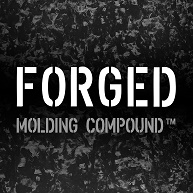
Carbon Fiber FMC (CF-SMC) is a sheet-type intermediate material made of cut high-strength carbon fiber impregnated with thermosetting resin. This material can be press molded, substantially reducing molding time compared to conventional autoclave or oven molding.
In addition, compared with carbon fiber intermediates of Continuous fibers, the random arrangement of Short fibers ensures fluidity and makes it possible to mold intricately shaped parts like those with ribs and bosses.

Under Development
Kyron™ ULTRA is a new sheet-like intermediate material developed by Mitsubishi Chemical, in which carbon fibers are impregnated with engineering plastics. It is a high performing carbon fiber composite material in the form of a UD (Uni-Directional) prepreg with carbon fiber in one direction.

Carbon fiber is a high-strength and high-elastic modulus material, yet its specific gravity is only one-fourth that of iron. It, therefore, enables high strength, high rigidity, and weight-saving in a wide variety of applications.
Carbon fiber tow, made of bundles of untwisted filaments, is the essential material in our carbon fiber product line.
Carbon Fiber Fabrics
[Close]

Carbon fiber fabrics have excellent drape properties which make them ideal for 3D shape applications. Due to the outstanding design possibilities they offer, carbon fabrics are also in high demand for applications that require visual appeal. As well as their design potential, carbon fabric materials offer excellent layup efficiency. You can layup a single ply in two directions.

Carbon Chopped Fiber is a product made by chopping carbon fiber tow.
Carbon Milled Fiber is a product made by grinding milling chopped fiber into a powder (milled) form.
Chopped fiber is typically around 3 to 6 mm long, while milled fiber is typically less than 200 µm long. Both of these materials are used to enhance the physical properties of thermoplastic resins and rubbers, and to increase electrical and thermal conductivity.
High thermal conductive BN sheet
[Close]

Proprietary BN fillers which have features of high thermal conductivity and isolation are packed into the resin sheet at high density. High-purity epoxy resin is developed and used as binder. It is suitable for power modules used in inverters, and achieves both thermal resistance and isolation equivalent to those of ceramic plate (in-house measurement result).
X-ray Scintillator Screen, DRZ™
[Close]

Scintillator is a material that convert radial ray such as X-ray into the visible light. By using with a light detector such as TFT, CCD, CMOS sensors, The image can be efficiently converted to a digital image.
Mitsubishi Chemical has its own phosphor manufacturing technology and processing know-how, including the DRZ series used for medical X-ray diagnostic imaging and baggage inspection, We have commercialized excellent scintillators for digital X-ray equipment such as Short Decay and Low Afterglow Type used for high-speed line sensors for contamination inspection.

ZEBREX™ is cutting-edge zeolite membrane dehydration process, which can dehydrate solvents under a wide range of water concentration and pH conditions, and is a one-pass continuous process rather than a batch process.
ex.) Ethanol, Isopropanol, Acetone, Methyl Ethyl Ketone, Tetrahydrofuran, etc.

DIAMIRON is a multilayer film combining polyamide, EVOH, polyolefin etc. by our proprietary technology. No chlorinated resin is used. Flat and tube types are available. A wide range of applications as deep drawing and vacuum packaging include food packaging, medical devices, and industrial materials.
DIAMIRON is produced under ISO9001 and FSSC22000-compliant quality control.
Applications
- For food packaging
- For medical device packaging
- For transfusion bags
- For industrial materials
Heat-Shrinkable Tube, HISHITUBE™
[Close]
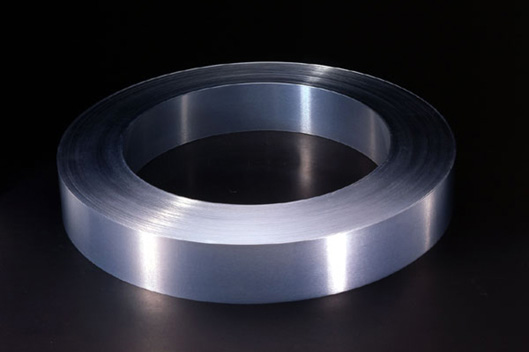
A high‑performance composite that bonds metal and plastic film under extreme pressure—no adhesives required.
Key Features
- Pure Mechanical Lamination
Metals and polymer films are fused through a proprietary process, delivering exceptional peel strength and durability without resin or adhesive layers. - Custom Combinations
Choose your ideal metal + film pairing, thickness and finish to match your exact specifications. - Broad Compatibility
- Metals:
- Aluminum、Stainless steel (SUS)、Electro galvanized steel (SECC)、Zn-Al-Mg alloy (ZAM)
[under development]Copper - Resin Films:
- Polyamide (PA)、Polypropylene (PP)、Ultra high molecular weight polyethylene (UHMWPE)、Fluoropolymers、PET (polyethylene terephthalate)
[under development]PC 、PBT 、PPS、PEI
Specifications & Custom Orders
- Width: up to 500 mm max.
(Actual maximum depends on metal type and thickness—please inquire for details.) - Thickness & Layering: fully customizable—mix and match metal and film layers as needed.
- Special Requests: if you don’t see your preferred metal or film listed, please contact us—many additional materials can be accommodated.

At Mitsubishi Chemical, we offer the high-performance engineering plastic film "SUPERIO™ UT". Leveraging our many years of accumulated technology and experience, we are currently mass-producing films made from PEI (polyetherimide) and PEEK (polyether ether ketone). These films have been adopted across a wide range of industries and applications, including automotive, electronics, and aerospace. To meet the increasingly diverse needs of our customers, we are actively engaged in the development and commercialization of an even broader range of high heat-resistant films. We also offer customized solutions tailored to specific customer requirements. If you are interested in high-performance engineering plastic films, please feel free to contact us.
Electronic Functional Materials
[Close]
Silicone rubber film, KEIJU™
[Close]
TREXPRENE™ TPV (Thermoplastic Vulcanizate) is a heat stabilized, vulcanized PP / EPDM product. Globally available for a wide range of applications and approved to a variety of Automotive Specifications.
TEFABLOC™ is versatile family of thermoplastic elastomers (TPE). Applies to most of the environments and plastic converting processes.
TEFABLOC™ incorporates several technologies including TPE-S, TPO and TPE-E. Among the large scale of possible properties, some of them are also boosted in process by reactor or dynamic cross-linking.The accurate combination of features leads to tightly satisfy application specifications even the most demanding ones.
Halogen Free Flame Retardant (HFFR) olefin based compound with low smoke solutions (LSZH)
VINIKA™ is vinyl based, soft and rigid formulations designed for a wide variety of applications. Fine-tuned properties such as hardness, heat and impact resistance, colour and much more.
Sunprene™ is high performance flexible PVC-P compounds for demanding environments with outstanding aesthetics.
Soarlite is the trade name of ethylene-vinyl alcohol copolymer for injection molding application as engineering plastics.
Soaresin™
[Close]
Soaresin™ is used as a stabilizer or purging agent for extrusion.
Synthetic Paper , YUPO™
[Close]

"YUPO" is a synthetic paper made from polypropylene resin as its primary material. It offers extraordinary beauty, strength and flexibility. YUPO combines the advantages of both paper and plastic film, and thanks to its unique qualities, it is used widely in several fields, including the commercial printing, packaging and communication paper.
Separation & Purification System
[Close]
Water Treatment System
[Close]
Plastic Filtering Plate
[Close]

Made form high quality polypropylene (PP), our wide range of filtering materials for filter press machines include lightweight filter plates with excellent chemical resistance and high impact strength, plastic membranes with superb thermal and chemical resistance, and filter-press-plate unit combined with anticorrosive plastic membrane.

HISHIMETAL is a composites material that is produced by laminating PVC film on a base material such as galvanized steel sheets, stainless steel sheets and aluminum sheets. PVC film is a general purpose film and we have employed it as a laminating film for many years.
This material is used in many different industries because it has metal strength and workability in addition to the design qualities and functional properties of plastic film.

EXUM incorporates galvanized steel sheets, stainless steel sheets, and aluminum alloy sheets as a base material. EXUM is a polyester-based plastic film-laminated steel sheet manufactured by our multi-layer extrusion technology.
This material is primarily used in interior applications due to the combination of metal strength, workability, and design qualities.
- Product Finder
-








